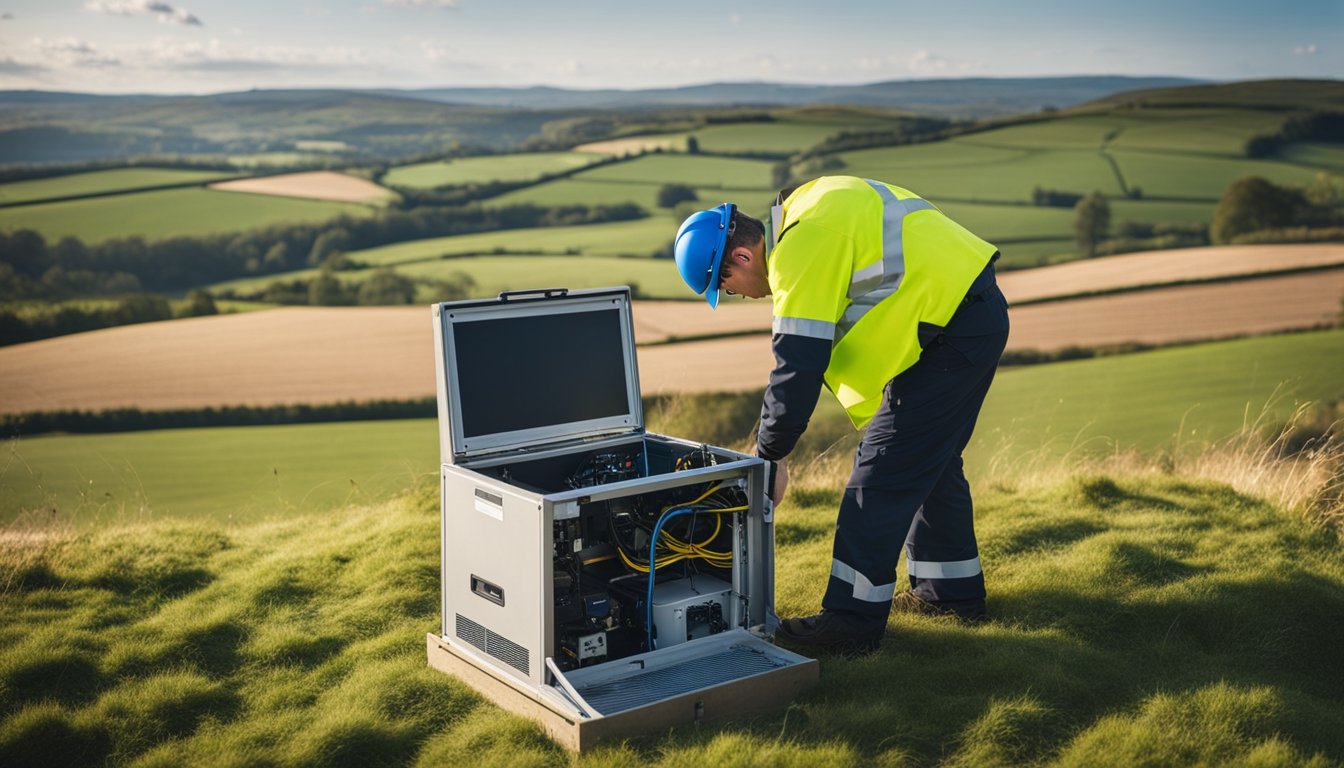Late updated: 24 Feb 2025 09:02
Written by: Oliver Bennett
Innovative Ways To Boost Internet Speed In Rural UK: Effective Solutions for Faster Connectivity
Exploring innovative ways to boost internet speed in rural UK areas is crucial as reliable connectivity becomes ever more necessary in today's digital age. Rural communities often struggle with slow internet speeds, causing a digital divide that can affect work, education, and quality of life. To tackle these issues, upgrading infrastructure and embracing alternative broadband solutions are key steps.

The government's Project Gigabit aims to improve broadband connectivity by expanding gigabit-speed networks to hard-to-reach areas. Yet, many can also benefit by exploring lesser-known options, such as small internet providers or specific community-driven initiatives like Broadband for the Rural North (B4RN). These alternatives can provide a significant boost in speed and reliability.
Router optimisation and improving mobile signal reception are simple yet effective ways to enhance internet speed in rural regions. These practical strategies can transform the online experience for many households. Let us uncover more about these methods and their impact.
Key Takeaways
- Improving infrastructure is essential for better rural connectivity.
- Alternative broadband solutions can significantly enhance speed.
- Simple optimisation strategies can improve household internet.
Upgrading Infrastructure for Enhanced Connectivity

To significantly boost internet speeds in rural UK, upgrading existing infrastructure is critical. This involves innovative projects in fibre broadband, strategic government programmes, and partnerships with the private sector.
Implementing Fibre Broadband Projects
Fibre broadband is essential to delivering high-speed internet across rural areas. Technologies like Fibre to the Premises (FTTP) provide connectivity directly to homes and businesses, ensuring consistent and rapid internet access.
Openreach leads the effort by expanding the full fibre network, supplying gigabit-capable broadband to underserved locations. Project Gigabit, driven by government and industry collaboration, aims to deliver this high-speed solution nationwide. Its implementation involves planning smartly and overcoming rural challenges, ensuring all citizens benefit from quality digital services.
Government Initiatives and Funding Schemes
The UK Government has rolled out several initiatives to enhance internet infrastructure. The Gigabit Broadband Voucher Scheme offers financial assistance to support local communities in accessing high-speed connections. Through partnerships with broadband providers, the scheme subsidises the costs of deploying gigabit-capable services.
Alongside this, funding schemes aim to remove financial barriers in rural broadband coverage. These initiatives are part of a broader plan for change, striving towards nationwide gigabit connectivity and equal access to fast internet, no matter one’s location.
Private Sector Collaboration and Investment
Private companies play a significant role in improving internet infrastructure. By investing in projects like the full fibre rollout, they drive the reach of high-speed broadband. Broadband providers, including major players like BT and Virgin Media, invest heavily to extend networks and enhance connectivity.
Collaboration with government bodies boosts effectiveness, while shared goals and resources bring about faster implementation. This synergy between sectors accelerates infrastructure development, ensuring comprehensive broadband coverage in even the most remote areas.
Through such initiatives, we can make substantial progress in delivering equitable, high-speed internet to the rural UK, thus fostering greater connectivity and numerous opportunities for communities.
Leveraging Alternative Broadband Solutions
In rural UK areas, traditional broadband infrastructure is often insufficient. As a result, we must explore various alternative broadband solutions to provide fast and reliable internet access. This section will explore the key methods, including mobile and satellite broadband, innovative last-mile technologies, and methods to enhance internet stability.
Expanding Mobile and Satellite Broadband Access
Mobile and satellite broadband offer viable solutions for rural communities with inadequate fixed-line options. Mobile broadband, particularly 4G in areas like Shropshire or Anglesey, provides fast connectivity without the need for extensive infrastructure. MiFi devices can transform mobile signals into Wi-Fi, allowing multiple devices to connect simultaneously and enabling a flexible solution for homes and small businesses.
On the other hand, satellite broadband serves remote areas where terrestrial connections aren’t feasible. This technology beams internet signals directly to a satellite dish, delivering reliable connectivity even in hard-to-reach regions. By combining mobile and satellite broadband, we can ensure underserved regions access to robust and versatile internet options.
Innovative Technologies for Last-Mile Connectivity
Addressing last-mile connectivity challenges is crucial for areas like the Yorkshire Dales or the Dee Valley. Wireless solutions such as fixed wireless access or advanced point-to-point systems can bridge the gap between core infrastructure and end-users, providing high-speed connections without requiring extensive cabling.
Emerging technologies enable unique deployment methods. For example, utilising drones or balloon-based systems can temporarily extend broadband reach, especially in areas suffering from severe terrain challenges. It's important to focus on these innovative approaches to effectively deliver internet access across geographically challenging landscapes.
Enhancing Internet Stability with Dual Lines and Mesh Networks
In rural settings, providing a stable internet connection is crucial. Implementing dual broadband lines offers a backup option, reducing downtime and maintaining continuous connectivity. Leased lines in areas like Herefordshire ensure dedicated bandwidth, crucial for businesses relying on fast, consistent internet.
Mesh networks enhance Wi-Fi coverage and are particularly beneficial for larger properties or community centres. By placing nodes throughout a property, these networks offer seamless coverage and eliminate traditional Wi-Fi dead zones. It's essential to consider leveraging these solutions to bolster internet reliability across diverse rural locales.
Frequently Asked Questions

Boosting internet speed in rural UK involves leveraging various technologies and improvements. These include enhancing Wi-Fi signal strength, exploring satellite broadband options, and implementing upcoming infrastructure developments.
What are the most effective methods for improving Wi-Fi signal strength in remote UK regions?
Improving Wi-Fi signal strength in remote areas involves optimising router placement, using Wi-Fi extenders, and ensuring minimal interference from other electronic devices.
Which satellite broadband services offer the best coverage for rural UK communities?
Satellite broadband providers like Starlink and HughesNet provide extensive coverage in rural UK regions, offering reliable connectivity where traditional broadband may not be available.
Can installing a signal booster significantly enhance internet connectivity in rural homes?
Yes, signal boosters can amplify mobile and broadband signals, potentially improving internet speed and reliability in rural homes.
What innovations in broadband technology are currently available for UK rural areas?
Innovations such as fixed wireless access and full fibre networks by 'altnets' provide faster and more dependable services for rural communities.
How do fixed wireless internet services compare to other rural broadband solutions in the UK?
Fixed wireless services, utilising radio signals delivered from masts, can offer competitive speeds compared to traditional DSL and satellite, often with lower latency.
Are there any upcoming infrastructure developments aimed at increasing internet speeds in the UK's countryside?
Several initiatives seek to expand full fibre coverage and enhance mobile network infrastructure, helping increase broadband speeds throughout the rural UK.
